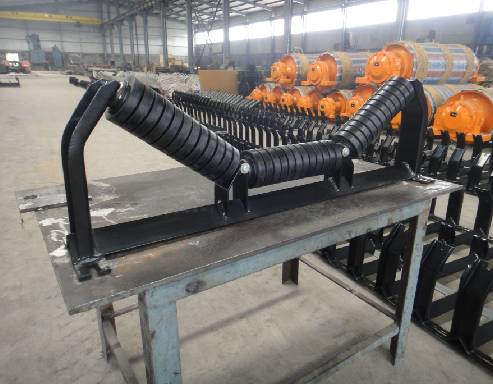 Afrikaans
Afrikaans  Albanian
Albanian  Amharic
Amharic  Arabic
Arabic  Armenian
Armenian  Azerbaijani
Azerbaijani  Basque
Basque  Belarusian
Belarusian  Bengali
Bengali  Bosnian
Bosnian  Bulgarian
Bulgarian  Catalan
Catalan  Cebuano
Cebuano  Corsican
Corsican  Croatian
Croatian  Czech
Czech  Danish
Danish  Dutch
Dutch  English
English  Esperanto
Esperanto  Estonian
Estonian  Finnish
Finnish  French
French  Frisian
Frisian  Galician
Galician  Georgian
Georgian  German
German  Greek
Greek  Gujarati
Gujarati  Haitian Creole
Haitian Creole  hausa
hausa  hawaiian
hawaiian  Hebrew
Hebrew  Hindi
Hindi  Miao
Miao  Hungarian
Hungarian  Icelandic
Icelandic  igbo
igbo  Indonesian
Indonesian  irish
irish  Italian
Italian  Japanese
Japanese  Javanese
Javanese  Kannada
Kannada  kazakh
kazakh  Khmer
Khmer  Rwandese
Rwandese  Korean
Korean  Kurdish
Kurdish  Kyrgyz
Kyrgyz  Lao
Lao  Latin
Latin  Latvian
Latvian  Lithuanian
Lithuanian  Luxembourgish
Luxembourgish  Macedonian
Macedonian  Malgashi
Malgashi  Malay
Malay  Malayalam
Malayalam  Maltese
Maltese  Maori
Maori  Marathi
Marathi  Mongolian
Mongolian  Myanmar
Myanmar  Nepali
Nepali  Norwegian
Norwegian  Norwegian
Norwegian  Occitan
Occitan  Pashto
Pashto  Persian
Persian  Polish
Polish  Portuguese
Portuguese  Punjabi
Punjabi  Romanian
Romanian  Russian
Russian  Samoan
Samoan  Scottish Gaelic
Scottish Gaelic  Serbian
Serbian  Sesotho
Sesotho  Shona
Shona  Sindhi
Sindhi  Sinhala
Sinhala  Slovak
Slovak  Slovenian
Slovenian  Somali
Somali  Spanish
Spanish  Sundanese
Sundanese  Swahili
Swahili  Swedish
Swedish  Tagalog
Tagalog  Tajik
Tajik  Tamil
Tamil  Tatar
Tatar  Telugu
Telugu  Thai
Thai  Turkish
Turkish  Turkmen
Turkmen  Ukrainian
Ukrainian  Urdu
Urdu  Uighur
Uighur  Uzbek
Uzbek  Vietnamese
Vietnamese  Welsh
Welsh  Bantu
Bantu  Yiddish
Yiddish  Yoruba
Yoruba  Zulu
Zulu Essential Components and Features of Conveyor Machinery for Efficient Industrial Operations
Understanding Conveyor Machine Parts A Comprehensive Overview
Conveyor machines play a pivotal role in various industries, including manufacturing, packaging, and logistics. They are designed to transport materials and products efficiently from one location to another, reducing manual labor and improving operational efficiency. To understand how these machines function, it's essential to grasp the various parts that comprise a conveyor system.
1. Conveyor Belts
At the heart of any conveyor machine is the conveyor belt. This continuous loop of material is what transports items along the production line. Conveyor belts come in various types, including flat belts, modular belts, and cleated belts, each suited for different applications. The choice of belt material, such as rubber, fabric, or metal, depends on factors like the items being moved, operating conditions, and the required durability.
2. Drive Motors
Drive motors are crucial components that provide the necessary power to move the conveyor belt. These electric motors can vary in size and type, depending on the load capacity and speed requirements of the conveyor system. They convert electrical energy into mechanical energy, which drives the conveyor belt forward. Proper selection and maintenance of these motors are essential to ensure smooth operation and prevent costly downtimes.
Rollers and pulleys facilitate the movement of the conveyor belt. Rollers support the belt and reduce friction, allowing for smoother transport of materials. They are often placed at intervals along the conveyor to provide stability. Pulleys, on the other hand, are situated at either end of the conveyor system. The drive pulley, connected to the motor, propels the belt, while the return pulley ensures the belt loops back for continuous operation.
conveyor machine parts

4. Framework and Supports
The framework of a conveyor system provides structural integrity and support. Typically made of steel or aluminum, the framework ensures that the conveyor maintains the necessary alignment and stability during operation. Supports may include legs, brackets, and cross members, which are strategically positioned to withstand the weight and movement of transported materials.
5. Sensors and Control Systems
Modern conveyor systems often incorporate sensors and control systems to enhance automation and monitoring capabilities. Sensors can detect the presence of products on the conveyor, measure speed, and monitor load weight. Control systems, including programmable logic controllers (PLCs), allow for precise management of the conveyor's operation, enabling features like start/stop functions, speed adjustments, and troubleshooting alerts.
6. Safety Features
Safety is a paramount concern in any conveyor system. Various safety features are incorporated to protect workers and prevent accidents. These include emergency stop buttons, safety guards, and side rails to prevent items from falling off the conveyor. Additionally, regular maintenance checks are essential to identify wear and tear, ensuring that all components are functioning safely and efficiently.
Conclusion
In conclusion, conveyor machine parts are integral to the functionality and efficiency of automated material handling systems. By understanding each component's role—from the conveyor belt and drive motors to rollers, supports, and sensors—businesses can optimize their operations, improve productivity, and ensure safety. As technology advances, the integration of smart sensors and AI in conveyor systems is expected to revolutionize the way materials are handled in various industries, leading to even greater efficiencies and innovations.
-
Revolutionizing Conveyor Reliability with Advanced Rubber Lagging PulleysNewsJul.22,2025
-
Powering Precision and Durability with Expert Manufacturers of Conveyor ComponentsNewsJul.22,2025
-
Optimizing Conveyor Systems with Advanced Conveyor AccessoriesNewsJul.22,2025
-
Maximize Conveyor Efficiency with Quality Conveyor Idler PulleysNewsJul.22,2025
-
Future-Proof Your Conveyor System with High-Performance Polyurethane RollerNewsJul.22,2025
-
Driving Efficiency Forward with Quality Idlers and RollersNewsJul.22,2025





























